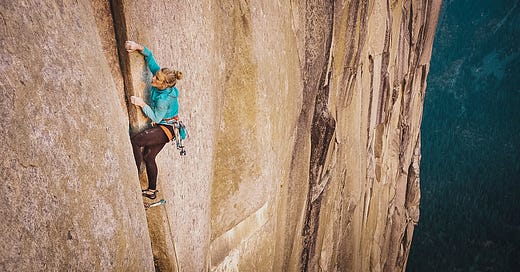
On his website, my dear Dharma friend Rev. Kokyo Henkel has delineated some helpful, practical guidelines for doing a solo meditation retreat. Below is my distillation of these guidelines (all words are his).
The word “retreat” could be used to translate:
the Sanskrit term: varṣa (a three-month, rainy season retreat originating in Buddha’s time);
the Japanese terms:
ango (安居 “peaceful dwelling”; three-month Zen retreat in China and Japan);
kessei (結制 “establishing a boundary/restraint”; another name for ango);
doku-sesshin (獨攝心 “solitary gathering of mind”; maybe the most appropriate term for solitary Zen retreat)
and the Tibetan term tsam (“boundary”).
Retreat could be understood as having three aspects: outer, inner, and innermost. Outer retreat is defined by the guidelines in this essay; inner retreat is keeping whatever precepts one holds and not straying into distracted thoughts of past and future; and innermost retreat is peacefully abiding in the empty luminous nature of mind—unimpeded, non-dual with all experiences, and infused with compassion for all beings.
Setting up and keeping a daily practice schedule is the foundation of any retreat. Traditionally in China, Korea, Japan, and Tibet, a daily schedule consists of four sessions of formal practice “on the cushion”—usually interspersed with three meals (breakfast, lunch, and smaller evening snack or tea). Practicing alone, nobody else will know if one keeps to the schedule; this may be especially beneficial for those who are used to practicing in group retreats. It is very helpful for developing self-discipline and self-honesty, without relying on the peer-pressure of “others” to help one follow the schedule.
For a retreat longer than 21 days, one may use a modified schedule one day a week, including more “free” time or later wake-up time. For a retreat from 1-10 days, one could add a period in the early morning and late evening to make twelve periods. In the Japanese Sōtō Zen tradition, 40-minute zazen periods is standard, and in the Rinzai Zen tradition it’s ~25 minutes. This schedule has 2- or 3-hour breaks between sessions, which is quite long even after cooking, eating, cleaning, and exercising—which may be especially appropriate for a longer retreat. A sample schedule that I generally follow is below:
In a traditional 3-year solitary (or group) retreat in all Tibetan lineages, the standard daily schedule is four 3-hour formal practice sessions (with no “days off”) —quite a high standard. My Dzogchen teacher Tsoknyi Rinpoche recommends one full retreat day every week, if possible, for all his students—with 1.5 or 2-hour sessions in early morning and evening, 2- or 3-hour sessions in late morning and afternoon. If one also practices Vajrayana, then mantra recitation, etc., could take the place of some zazen periods. Dharma study is often discouraged during shorter Zen retreats, in order to give up all kinds of discursive mental activity, but this is an option depending on personal preference, especially for longer retreats.
My practice has been greatly benefitted by Dharma study during retreats—to clarify meditation methods I may be working on, for inspiration and to keep returning the mind to Dharma instead of worldly concerns. For retreat reading, it’s important to choose a text that relates to actual experiential practice on retreat, as opposed to Buddhist history, how to get along with others (who aren’t around), etc. Life stories of the ancient masters is a traditional type of retreat reading in the Tibetan tradition. Meditation manuals and more challenging texts, that we don’t have the time or concentration to focus on outside of retreat, can be a great enhancement to retreat. In modern times, this study time could also include listening to recordings of talks by one’s teachers.
It is traditional in Buddhist retreats to set up a physical boundary, even doing a ceremony at the beginning and end of a longer retreat to make offerings to the Dharma Protectors in the four directions that surround the boundary. Before beginning retreat it’s important to decide how far one can walk in any direction from one’s retreat room. This could be anywhere from a 30’ x 30’ square, to a square mile if one is in the wilderness and won’t run into other people.
Silence is a key aspect of any retreat. Ideally one is in a silent environment, but even more important is to refrain from talking with others. If communication is necessary, it could be limited to a certain time of the day, or using note-writing. Since writing takes longer than speaking, it tends to limit conversation to its essentials. One might try an “almost solo” retreat with a partner or friend, which I have done with my wife.
Simplicity means to limit usual activities that tend to pull awareness out of spacious presence into narrow focus on objects and old habits. These activities include watching TV or movies, using the internet, engaging in email and social media, etc. It’s very helpful to turn on email “vacation setting” when on retreat. To save time when cooking meals, an electric rice cooker is helpful, since one can turn it on during kinhin and then forget about it. In Zen monasteries it is traditional to cook a little extra lunch (the main meal) and just heat up the leftovers for the evening “medicinal” snack/meal. This also minimizes cooking time in a solo retreat.
If you’d like to learn more about Rev. Kokyo (Luminous Owl), you can listen to our delightful and illuminating podcast from a few months ago: “Cloud & Water Priests: The Zen Practice of Wandering.”




